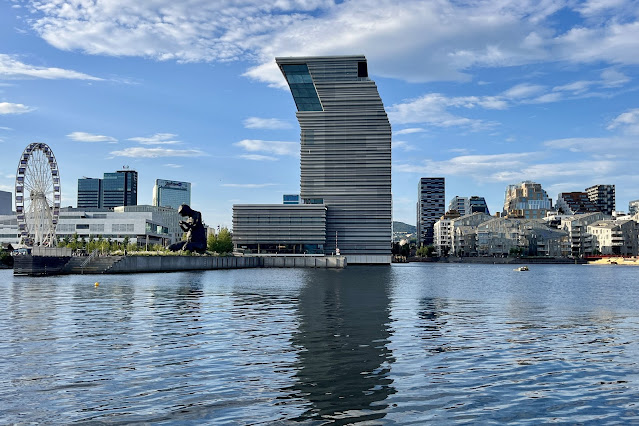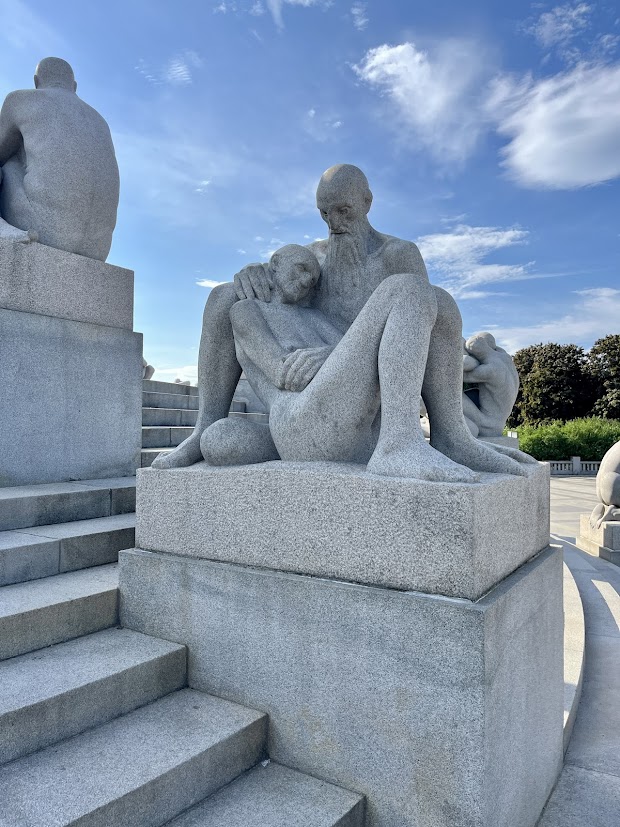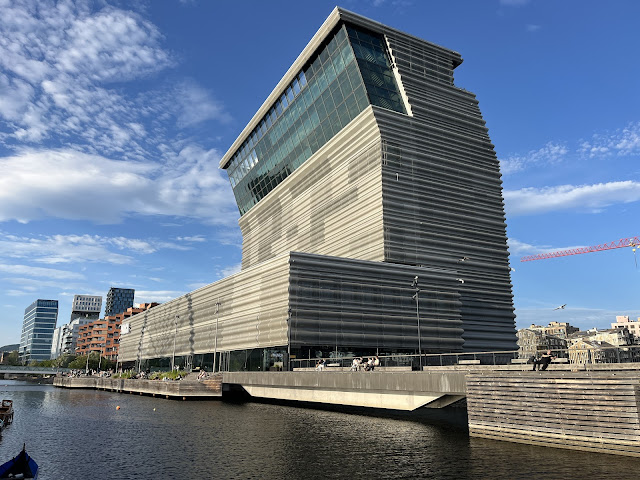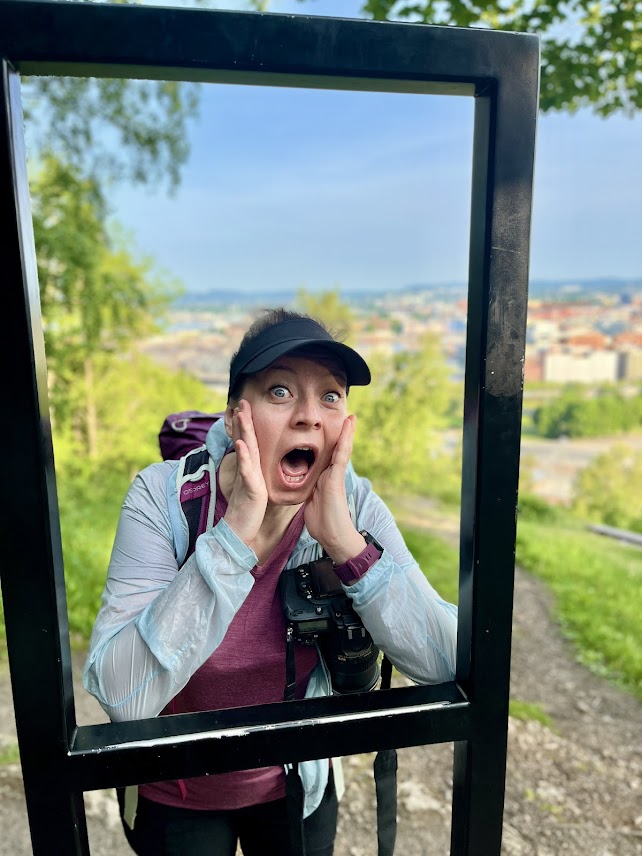Norway. Oslo
A sunny afternoon in Oslo set the tone for our quick city escape before heading into Norway’s mountains. From historic cathedrals and sculpture-filled parks to waterfront strolls and iconic landmarks like the Opera House, we made the most of 24 hours in the capital. Here’s how we explored Oslo on foot, with a backpack full of hiking dreams...
We arrived in Oslo on a sunny afternoon, the perfect start to our short city adventure before heading into the wild. From the airport, we hopped on the train straight to the city center...
With a hiking trip ahead of us, we made a quick stop at a local outdoor store to pick up tourist gas for our Fire-Maple cooking system. Handy tip: many central shops stock it, but it’s best to get it early in your trip...
Our first proper sight was the Oslo Cathedral (Oslo Domkirke), a charming and historic Lutheran cathedral dating back to 1697. Its calm interior is decorated with beautiful stained glass windows and ceiling paintings. The square outside was lively, surrounded by cafes and local life—a perfect spot to feel the pulse of Oslo...
Next, we made our way by tram to one of Oslo’s most famous spots: Vigeland Park (part of Frogner Park).
This isn’t your typical green space—it’s the world’s largest sculpture park by a single artist! Over 200 granite and bronze sculptures by Gustav Vigeland fill the park, portraying humans in all stages of life...
The most iconic piece? The Monolith, a 14-meter-high column of entwined bodies. Surreal and stunning...
Some statues are playful, some intense, but all are deeply expressive...
We had a small picnic on the grass nearby, soaking up the sun and the peaceful vibe...
After the park, we strolled through central Oslo, starting from the Royal Palace. It’s not flashy, but its minimalist elegance fits perfectly with Norway’s understated style. The palace, completed in the mid-19th century, is the official residence of the Norwegian monarch...
Nearby, in the palace park, we found a graceful statue of Queen Maud, the first queen of independent Norway. She was born a British princess (daughter of King Edward VII), and became known for her elegant style and love for outdoor life, which made her especially popular among Norwegians. The royal grounds are open and peaceful - a nice blend of history and daily life right in the city center.
We didn’t catch the changing of the guard, but we did see one of the palace guards standing watch - calm and formal, a quiet symbol of tradition...
In front of the palace stands a statue of King Karl Johan, the Swedish-Norwegian monarch who ruled during the early 19th century. Interestingly, he was originally a French general under Napoleon - Jean-Baptiste Bernadotte - before being elected crown prince of Sweden and Norway.
Soon we reached Oslo Rådhus -the City Hall, famous for hosting the Nobel Peace Prize Ceremony each year. Its red brick towers might not be beautiful at first glance, but the interior is filled with colorful murals and Norwegian symbolism...
Although we didn’t go inside, we spent some time in the open square in front of the building, where we discovered a striking mural filled with messages of support for Ukrainians - an emotional and powerful reminder of the ongoing war, calling out the brutal actions of the Russian aggressors...
In the same area, I spotted a slackline stretched between two low metal holders, about 40 cm high - so of course, I had to try it out. A bit shaky at first, but fun and unexpected in front of such a serious building. The City Hall square turned out to be a thoughtful, surprising, and slightly playful stop on our walk through Oslo...
As we continued toward the fjord, we arrived at the striking Oslo Opera House, one of the city’s most iconic modern buildings. Designed to resemble a glacier rising from the water, it invites visitors to walk right up its sloping roof for sweeping views of the harbor.
The sloped white marble surface leads all the way up to a panoramic viewpoint over the Oslofjord and city. It’s like climbing a glacier made of architecture....
One subtle but fascinating detail we noticed was the etched figures in the glass windows—these abstract forms are inspired by traditional weaving patterns and were created in collaboration with the artist Olafur Eliasson. The shimmering, ghost-like figures catch the light in different ways throughout the day, giving the building a unique texture and depth, both inside and out.
After exploring the Opera House, we continued along the waterfront and passed by the striking Munch Museum—a tall, modern tower dedicated to Norway’s most famous artist, Edvard Munch. Best known for The Scream, Munch’s work dives deep into themes like love, anxiety, and death, often reflecting his own turbulent life. The museum houses over 28,000 of his works, including paintings, drawings, and personal items he left to the city. Even from the outside, the building makes a bold statement—tilted slightly forward as if bowing toward the fjord, symbolizing both respect and introspection.
Just outside the museum, we noticed a powerful and touching statue of a mother holding her child. The sculpture is simple but emotional, standing quietly among the modern architecture and open space. It serves as a subtle reminder of human connection and care—fitting in its proximity to Munch’s deeply personal art...
The area around the museum feels like a thoughtful blend of culture, reflection, and modern life, and we were glad to experience it even briefly on our way...
Not long after, we continued walking and left the city behind, heading toward the camping area where we would stay the night—getting closer to nature with every step.
The next morning, on our way to the bus station, we came across a viewpoint with a striking atmosphere. It turned out to be the very place that inspired Munch’s famous painting The Scream—a dramatic scene overlooking Oslo from Ekeberg Hill. This is where Munch captured the emotional swirl of city, sky, and fjord. Today, though, the view has changed—trees and new buildings now partially block the fjord, so it no longer matches the painting exactly. Still, the mood of the place is unmistakable. In the quiet morning light, with the city humming below and the forest around us, the setting carried a surreal, almost haunting feeling—like stepping into a piece of art.
From Ekeberg Hill, there’s a sweeping view of Oslo’s skyline, where modern architecture meets natural beauty...
From the bus station, we caught our early ride to the starting point of the legendary Besseggen Ridge hike. We had booked the bus ticket in advance—not only to secure our spot, but also because it’s cheaper that way. This direct service to the trailhead is only available during the hiking season. Our time in Oslo was short but full of art, sunshine and beautiful surprises - just the right warm-up before heading deep into Norway’s wild heart...











































Comments
Post a Comment